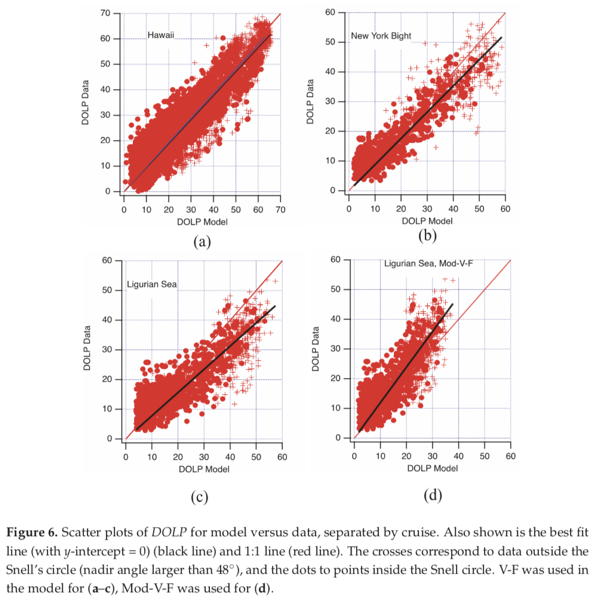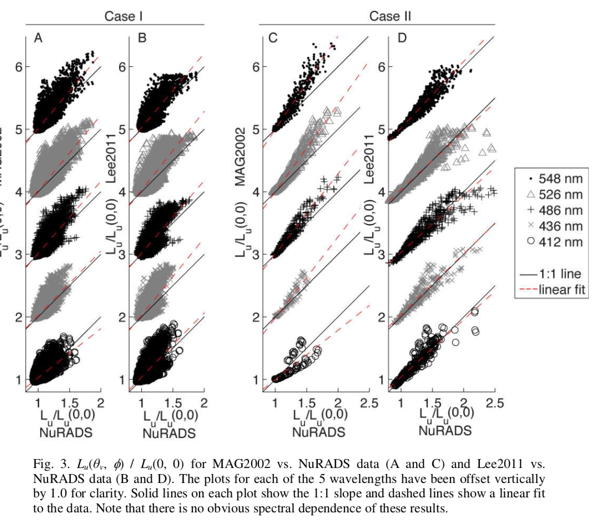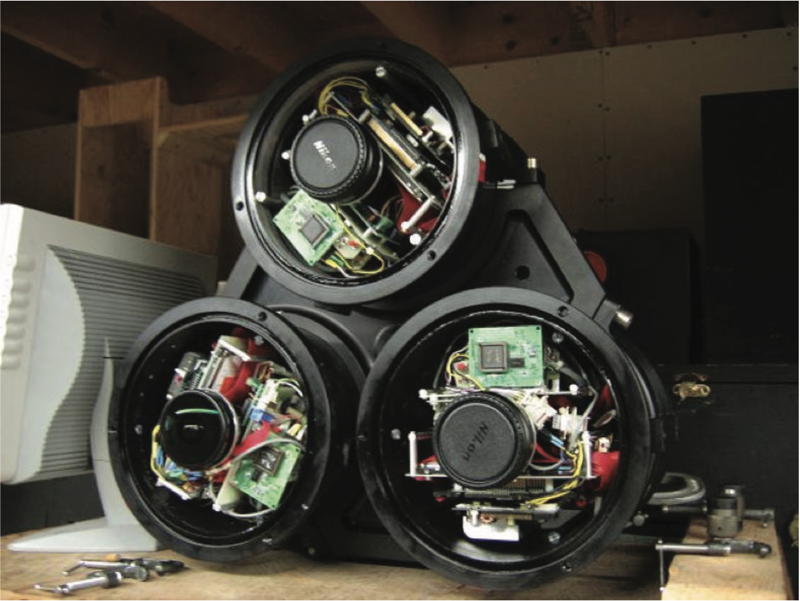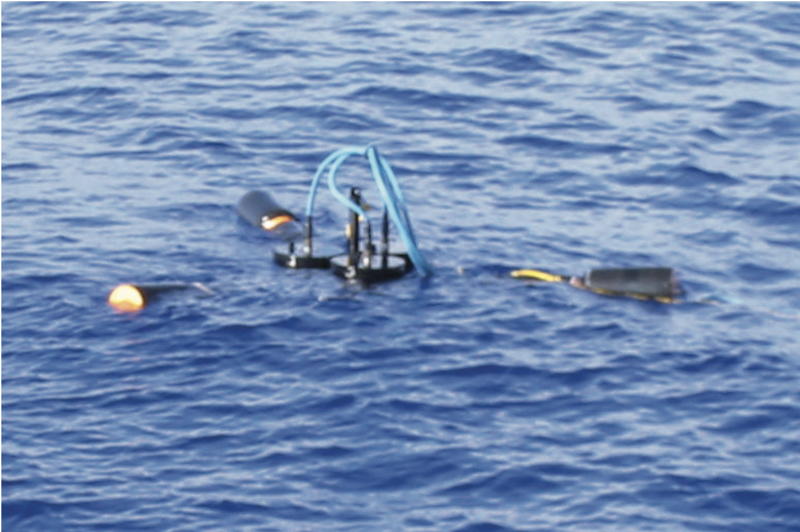BRDF
As discussed on the MOBY page, vicarious calibraiton for ocean color sensors is critical to achieve desired accuracy and long-term stability of ocean color time-series. The primary data products produced by MOBY are the water-leaving radiance, surface irradiance, and solar normalized water-leaving radiance (see the Ocean Optics Web Book for rigorous definition of terms). The water-leaving radiance depends on the sky radiance distribution, viewing geometry, and water optical properties. Coincident measurements by a given satellite ensure comparable sky radiance distribution and water optical properties, but (unless the sensor is directly overhead MOBY), the viewing angle will be different. Correction for viewing direction is required to make the best comparison between a satellite measurements and MOBY. This correction requires knowledge of the oceanic bidirectional reflectance distribution function (BRDF).
BRDF of the ocean has been a research topic for the U.M. Atmospheric and Oceanic Optics Group for many years. Howard Gordon has developed theoretical models, and Ken Voss has designed numerous custom instruments to measure BRDF in situ. Combining these with many cruise opportunities and water inherent optical property from numerous collaborators, we have shown that model predictions do indeed perform well for predicting oceanic BRDF. Links to a few recent papers are below.

Polarized upwelling BRDF
Models for the unpolarized BRDF have been validated, but variations in the polarization of the upwelling radiance due to the sun angle, viewing geometry, dissolved material, and suspended particles have not been systematically documented. In this work, we simulated the upwelling radiance distribution using a Monte Carlo-based radiative transfer code and measured it using a set of fish-eye cameras with linear polarizing filters. Read more...

Oceanic BRDF in Case I and II water
The results suggest that BRDF corrections in Case II water are feasible using single, average, particle scattering phase functions, but that the existing approach using variable particle scattering phase functions is still warranted in Case I water. Read more...
BRDF instruments

 PolRADS (polarized radiance distribution system) assembly comprised of three
cameras in a triangular arrangement. Top: Shown without the cover plates
and glass dome windows. Bottom: Shown as deployed. The black and orange
objects are floats used to stabilize the instrument. The blue cables
provide power and data connectivity to the controlling computer on the ship.
PolRADS (polarized radiance distribution system) assembly comprised of three
cameras in a triangular arrangement. Top: Shown without the cover plates
and glass dome windows. Bottom: Shown as deployed. The black and orange
objects are floats used to stabilize the instrument. The blue cables
provide power and data connectivity to the controlling computer on the ship.
 ART GLEASON | Ocean Optics
ART GLEASON | Ocean Optics